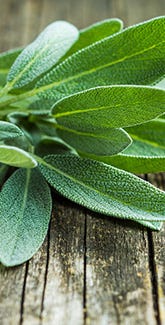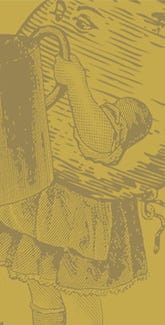How to Grow Herbs


Herb Growing Guide
Most herbs are extremely adaptable, easy to grow, and require little attention, making them a popular choice among beginning and experience gardeners alike. From anise, basil, and cilantro to parsley, sage, and rosemary, herbs are a fun addition to any garden, indoors or out. The range of flavors is fantastic, so growing an assortment gives you an array of options when it comes to getting creative in the kitchen.
Before you get started, it's helpful to understand the different lifecycles of herbs. Herbs can be annual, perennial, or biennial. We'll explain!
Annual Herbs
Annual plants grow quickly, and will be ready to enjoy in the first year. Most annuals can be direct sown (though it won't hurt to start them indoors).
- Anise will germinate in 10-14 days and will be ready to enjoy in 120 days.
- Basil will germinate in 5-10 days, and be ready to enjoy in 60-90 days.
- Summer Savory will be ready in the first season.
- Cilantro will take about 2-3 weeks to germinate. Leaves are ready in 35-40 days. In 60-90 days, you'll see white flowers that will yield tan Coriander seeds, which you can harvest and use as a spice.
Biennial Herbs
Biennial herbs have a two-year lifecycle. Harvest time depends on each herb.
- Caraway will take 1-2 weeks to germinate. In 65-75 days in the first season, you'll see lush green leaves. In the second season, you'll see a taller plant with white flowers, which will produce seeds.
- Parsley is a biennial that acts more like an annual. Parsley will take 1-2 weeks to germinate, and ready to enjoy in 70-90 days. In its second season, it will grow flowers, which pollinators can enjoy (but the leaves will be less flavorful). You can eat parsley stems!
Perennial Herbs will come back year after year. They will be slower to germinate, but have patience, and keep them watered while they take time to sprout. They will take a year to mature, so protect them over the winter and they’ll continue to grow and provide you flavors and aromas for years to come. Once your perennial herbs have matured, you can clip cuttings and dry them, for wreaths or sachets.
How to Plant & Grow Herbs
Most herbs are perfectly suited for container growing, given their petite stature and adaptable nature. Plant a variety of herbs in containers right in the kitchen, for quick and convenient snipping, mincing, or chopping. Growing herbs in containers indoors also means no weeding, and a variety of flavors growing year-round.
- Soil: Most herbs do well in virtually any type of soil and are impressively disease and pest resistant. Growing herbs in containers indoors means no weeding and a year-round growing season, while growing herbs outdoors in the garden gives you a larger and more flavorful crop. Either way, make sure your herbs get plenty of sunlight and are planted in soil that's kept moist but well drained.
- Starting Seeds: Plant seeds no more than 1/8 inch deep so they are lightly covered with soil (the tiniest seeds can simply be sprinkled on top of soil without covering). Annuals can generally be direct-sown once it’s warm enough. Perennials should be started indoors for a longer germination period. For more specific sowing information, refer to each individual product page or seed packet.
- Transplanting: When seedlings are mature, you can transplant them in your garden, or transplant them into generously-sized containers.
- Growing: Annual herbs will grow quickly, while Perennial herbs will have a slower growth rate. Again, be sure to check each product page or seed packet for details. Most herbs thrive when harvested or thinned regularly, which keeps the plants vibrant and healthy and encourages continuous growth.
-
Harvesting: Ideal harvesting times vary by herb type. Herbs that are grown for their leaves, such as basil, can be picked virtually any time after the leaves form. For leafy herbs grown in the garden, pick them early in the morning after the dew dries and avoid washing them to preserve flavor. Flowering herbs like lavender should be harvested before the flower has fully bloomed for best fragrance.
Did You Know? Fun Facts About Herbs
While the terms "herbs" and "spices" are often used together and interchangeably, there is a difference. Herbs come from the leaves of a plant, while spices are derived from a plant's bark, roots, or seeds. Some plants can be both - for example, Cilantro leaves can be eaten as a fresh herb, and its seeds, Corinander, can be harvested to use as a spice.



